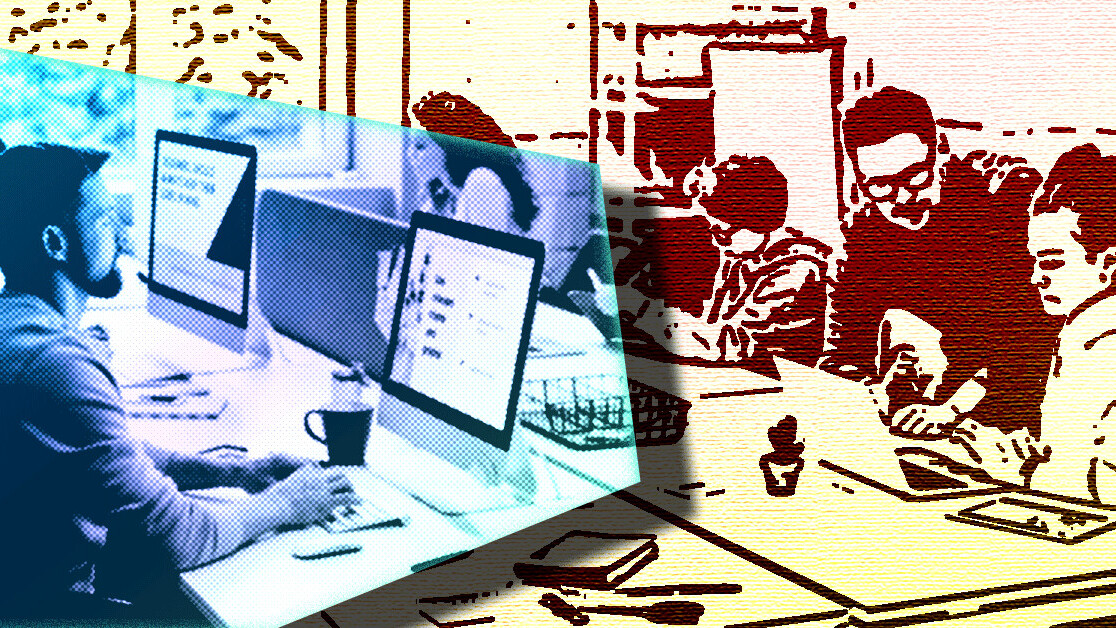
We have to get rid of our past ideas of what a “normal” business office looks like. As lockdowns ease in the future, there will be industries that want to bring everyone back into an office location even as other companies remain in a fully-remote system.
But there is another option that is poised to become the standard for business operations in the 21st century: the hybrid workplace. In this type of setting, some workers are based in a physical office, while others work from spaces outside of the physical office and can be located anywhere in the world.
Our company has managed a partly-remote team since long before the pandemic began. Since our team members are spread out and not sitting in the office, each department within our company has to consider how decisions and general day-to-day operations impact the management and support of our workforces.
In our years of functioning as a hybrid workplace, we have developed a number of best practices that fall into the following three distinct areas of focus.
1. Remember: People are always number one
With a hybrid workplace, there can be a danger of the remote workers feeling disengaged from the other team members who are in an office together and have the opportunity for impromptu discussions or socializing at the coffee machine.
Fortunately, there are some great things you can do that help to keep all of your employees engaged and feeling like part of the team. We may be cities, states, and sometimes even countries apart, but that doesn’t mean we can’t feel like a team.
I’ve found keeping your team members informed is one way to effectively mimic the feeling of being in an office.
Regular email and text updates on any news affecting your business or personal lives, short video calls, daily team meetings, as well as bi-weekly “all-hands” remote meetings remind team members they are part of something. Political and social updates — for example, regarding new COVID-19 restrictions or simple information such as “where can I still get toilet paper?” — are helpful for expats in particular.
When the pandemic started, companies were quick to realize that protecting their employees should be a top priority. They sent out masks and related personal safety items (e.g., hand sanitizer, etc.). Many companies often send trinkets like gift cards and small gifts at regular intervals, usually related to monthly goal meetings or team-building. This practice should absolutely continue with a hybrid workforce.
Since we’re all using some variation of Slack, one fun activity to raise team spirit is upping the level of competition within and across departments. These online chat tools offer the opportunity to create process-oriented games and virtual events (such as brainstorming or mini-hackathons).
For example, I really enjoyed the idea of a movie challenge that came from one team member. In this challenge, team members took turns in creating a photo or video of a movie, then the other team members guessed what it was.
Regardless of what you choose to do, creating any level of participation keeps your team members engaged and active. Each department in a company can take turns initiating such activities.
2. Support open, clear, and flexible communication
When workers are spread across different time zones, a company needs to adjust its approach to keeping everyone on the same page about projects. Having quick meetings in the conference room won’t work anymore if some of the team members are remote. People’s work schedules will likely be out of sync with each other, perhaps overlapping for only a few hours.
These out-of-sync schedules have led to the rise of “asynchronous communications” — communications that don’t involve an immediate back and forth exchange. Slack and other communication tools like it have made it a lot easier for hybrid workplaces to integrate employees from all over the world, but they won’t magically make your communication good on their own.
So to make sure communication is flowing between in-office and remote staff, I suggest you establish communication rituals, such as a daily standup channel on Slack, or an end-of-day email by team members about their activities and the status of important projects.
Department heads can also have staff “check in” when they start their day and “check out” at the end of the day so that colleagues know when people are available to respond to questions.
While today’s communications tools have given us the ability to send and receive messages at any time of day, that doesn’t mean that every company has to use them in this way. Hybrid workplaces adapt these tools to fit their employees and to ensure efficient communication by setting clear expectations.
During times when it’s “all hands on deck” for projects, managers must clearly convey expectations, so workers know when they should be responding more quickly to communications, or adjusting schedules to allow for more overlap with remote colleagues.
While we’re on the subject of schedules, I can promise you meetings will require a bit more coordination to ensure that everyone who needs to be on the call can be on the call.
When it comes to mimicking “face time” with teammates, video meetings are the simplest solution. You may find that some employees prefer to not have their camera on during calls, and here you will need to be flexible in accepting people’s personal preferences when it comes to sharing images of their home with colleagues.
3. Experiment with processes and workflows
If the chaos of the past several months has taught me anything, it’s that we need to be adaptable. Companies can’t just stick to rigid norms that worked in the past, when everyone was under the same roof together. The best way for your business to successfully incorporate remote workers onto the team is to experiment with different processes and workflows to see which work best for you.
For digital product development teams, it might mean adapting workflows to avoid potential bottlenecks when developers are several time zones away from their project managers. For HR departments, it might mean rethinking your hiring processes to research potential employees who are based in other countries, or adjusting the onboarding process for new hires who are remote.
Of course, there are lots of digital tools out there to assist hybrid workplaces as they strive to keep projects on track. In addition to video conferencing and communication tools, there are also multitudes of project management and document-sharing platforms as well.
In your chosen project management platform, you should experiment with types of setups for keeping track of tasks from creation to completion. For example, some teams prefer timeline views, while other teams find it easier to track tasks when they are organized according to the employee responsible for it. In your project management tool, create different “boards” for different projects or clients to keep things organized, and clearly communicate priorities.
With all these digital tools, security needs to be taken into account — particularly with sensitive project information exchanges and even interviews with potential hires. Before utilizing any digital tools, make sure that you’ve run everything by your IT department (or are following their procedures). The last thing you want during a conversation with an employee or client is to be “Zoom bombed.”
Hybrid workplaces have, as a standard, required flexibility that is being employed in full during this pandemic. We must remember that each team member is different, and has different issues (both at work and in their personal lives) they are dealing with and which we might not be aware of. It is important to treat each team member as an individual.
Transforming your office to a hybrid workplace increases the importance of showing empathy and supporting employee needs, rather than following “business as usual.” An adaptive mindset and use of the right tools, coupled with the right company attitude toward team-building and support for work/life balance, will allow us to emerge from this pandemic better and stronger.
Get the TNW newsletter
Get the most important tech news in your inbox each week.




